The island is home to Europe’s highest altitude vineyards up to 1,700m (5,780ft) on the slopes of El Tiede, a stratovolcano, which according to sciencedaily.com is a “tall, conical volcano composed of one layer of hardened lava, tephra, and volcanic ash. These volcanoes are characterized by a steep profile and periodic, explosive eruptions.” The last eruption by El Tiede was in 1909.
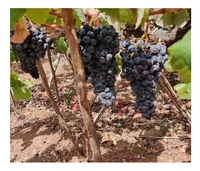 El Tiede is on the northern side of the island with an Atlantic climate with high humidity and rainfall. The altitude where the vines are planted is above the fog line with lower rainfall and humidity, a greater temperature difference between day and night, and more intense sunlight, all conditions that allow grapes to thrive and ripen.
El Tiede is on the northern side of the island with an Atlantic climate with high humidity and rainfall. The altitude where the vines are planted is above the fog line with lower rainfall and humidity, a greater temperature difference between day and night, and more intense sunlight, all conditions that allow grapes to thrive and ripen.
A very interesting fact about wine grape growing in the Canary Islands is that some vines are as many as 300 years old, planted on their own roots, because The Canaries have never had the destructive root louse called phylloxera that decimated the vineyards of Europe. Vintners on the Canary Islands credit their geographical isolation for this blessing.
 these days. We had an opportunity to meet him, but not a lot of time to chat since he was busy with his crew harvesting grapes. The winery sits on a hillside with lush vineyards surrounding it and a great view of the North Atlantic Ocean. We had not made an appointment, but we were able to taste several wines in their shop with the assistance of very helpful staff. This is where I had my first taste of Canary Island Listan Blanco. It is the same grape that makes Sherries, but in grown in a very different environment. Looking back at my notes, I wrote, “I love this grape!” It was pale yellow, clear and bright, with aromas as ripe pears mingling with elderflower aromas and saline notes. On the palate, it was fresh and bright with flavors of Meyer lemon, white peach and ripe pears, crisp acidity and a mouthwatering finish. This was a 2019 vintage! Unfortunately, their Listan Blanco is not available in the U.S., yet. However, it is a great example of the wine quality in Tenerife.
these days. We had an opportunity to meet him, but not a lot of time to chat since he was busy with his crew harvesting grapes. The winery sits on a hillside with lush vineyards surrounding it and a great view of the North Atlantic Ocean. We had not made an appointment, but we were able to taste several wines in their shop with the assistance of very helpful staff. This is where I had my first taste of Canary Island Listan Blanco. It is the same grape that makes Sherries, but in grown in a very different environment. Looking back at my notes, I wrote, “I love this grape!” It was pale yellow, clear and bright, with aromas as ripe pears mingling with elderflower aromas and saline notes. On the palate, it was fresh and bright with flavors of Meyer lemon, white peach and ripe pears, crisp acidity and a mouthwatering finish. This was a 2019 vintage! Unfortunately, their Listan Blanco is not available in the U.S., yet. However, it is a great example of the wine quality in Tenerife. 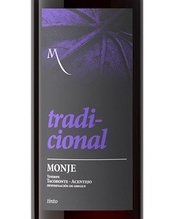 The 2018 Monje Tradicional ($22, David Bowler Imports) is indeed a traditional Island blend starting with 85 percent of the indigenous Listán Negro. Listán Blanco at 10 percent adds bright freshness and fixes the red color as in the Rhône Valley where they ferment Syrah with a touch of Viognier. Rounding out the blend is five percent of Negromoll, a grape native to Andalucía. It was fermented in stainless steel and spent four months in used oak barrels. It boasts a dark ruby color and aromas of black cherry with a touch of red currant. With almost three years in the bottle, it is sea-breeze fresh, with juicy, but lean black cherry fruit laced saline notes. Smooth tannins balance the juicy fruit.
The 2018 Monje Tradicional ($22, David Bowler Imports) is indeed a traditional Island blend starting with 85 percent of the indigenous Listán Negro. Listán Blanco at 10 percent adds bright freshness and fixes the red color as in the Rhône Valley where they ferment Syrah with a touch of Viognier. Rounding out the blend is five percent of Negromoll, a grape native to Andalucía. It was fermented in stainless steel and spent four months in used oak barrels. It boasts a dark ruby color and aromas of black cherry with a touch of red currant. With almost three years in the bottle, it is sea-breeze fresh, with juicy, but lean black cherry fruit laced saline notes. Smooth tannins balance the juicy fruit. 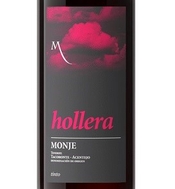 La Hollera ($25, David Bowler Imports) is the name of the area where Bodegas Monje is located. This 2018 100 percent Listán Negro is a totally different take on the grape. It goes through carbonic maceration, the fermentation process most associated with Beaujolais. The wine has a bright purple color with notes of ruby red and aromas of fresh berries, black and red. It offers loads of flavors of bright, fresh black cherry, blackberry fruit in the mouth balanced with crisp acidity and light, smooth tannins.
La Hollera ($25, David Bowler Imports) is the name of the area where Bodegas Monje is located. This 2018 100 percent Listán Negro is a totally different take on the grape. It goes through carbonic maceration, the fermentation process most associated with Beaujolais. The wine has a bright purple color with notes of ruby red and aromas of fresh berries, black and red. It offers loads of flavors of bright, fresh black cherry, blackberry fruit in the mouth balanced with crisp acidity and light, smooth tannins. 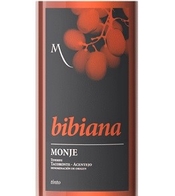 Yet another take on Listán Negro is this 2018 Rosé ($22, David Bowler Imports). Bibiana is the name of Filipe Monje’s daughter. A couple of years after she was born, he decided to make a Rosé wine. While this decision was not related to her arrival, his experience making his first rosé brought back memories of first-time fatherhood. He was awake all night anxious to get just the right color and balance. His anxiety is our reward with this lovely Rosé. Even with three years in the bottle it is fresh and lively with a bright light red color and fresh berry, red currant aromas with saline notes. In the mouth red fruits of cherry and currant enhanced with notes of fresh orange zest are balanced with crisp acidity.
Yet another take on Listán Negro is this 2018 Rosé ($22, David Bowler Imports). Bibiana is the name of Filipe Monje’s daughter. A couple of years after she was born, he decided to make a Rosé wine. While this decision was not related to her arrival, his experience making his first rosé brought back memories of first-time fatherhood. He was awake all night anxious to get just the right color and balance. His anxiety is our reward with this lovely Rosé. Even with three years in the bottle it is fresh and lively with a bright light red color and fresh berry, red currant aromas with saline notes. In the mouth red fruits of cherry and currant enhanced with notes of fresh orange zest are balanced with crisp acidity. 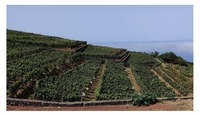 Additional grapes grown in the Canaries follow, with brief origin information from Wine Grapes by Robinson, et al. Lista Prieto from Castilla-La Mancha, known as the Mission grape in California, sometimes confused with the native Listán Negro. Negramoll was originally thought to be native to the Canary Islands, but DNA profiling has shown it to be identical to the grape Mollar from Andalucía. Tintilla is listed as a synonym for Trousseau from the Jura in France. Vijariego Negro Is a synonym for Sumoll a Catalan blending variety. Listán Blanco is a synonym for Palomino Fino, which is the main grape in Jerez. Moscatel de Alejandría is a Spanish synonym of Muscat of Alexandria. Albillo Criollo, one of many Albillo grapes with different names, but apparently related to none since it has a unique DNA profile.
Additional grapes grown in the Canaries follow, with brief origin information from Wine Grapes by Robinson, et al. Lista Prieto from Castilla-La Mancha, known as the Mission grape in California, sometimes confused with the native Listán Negro. Negramoll was originally thought to be native to the Canary Islands, but DNA profiling has shown it to be identical to the grape Mollar from Andalucía. Tintilla is listed as a synonym for Trousseau from the Jura in France. Vijariego Negro Is a synonym for Sumoll a Catalan blending variety. Listán Blanco is a synonym for Palomino Fino, which is the main grape in Jerez. Moscatel de Alejandría is a Spanish synonym of Muscat of Alexandria. Albillo Criollo, one of many Albillo grapes with different names, but apparently related to none since it has a unique DNA profile.
Although my time was brief in Tenerife, I found many exciting, delicious, unique wines. I encourage you to look for them, and if your favorite wine store doesn’t have them, encourage their management to stock them!
Connect with her on Twitter at @RebeccaOnWine
